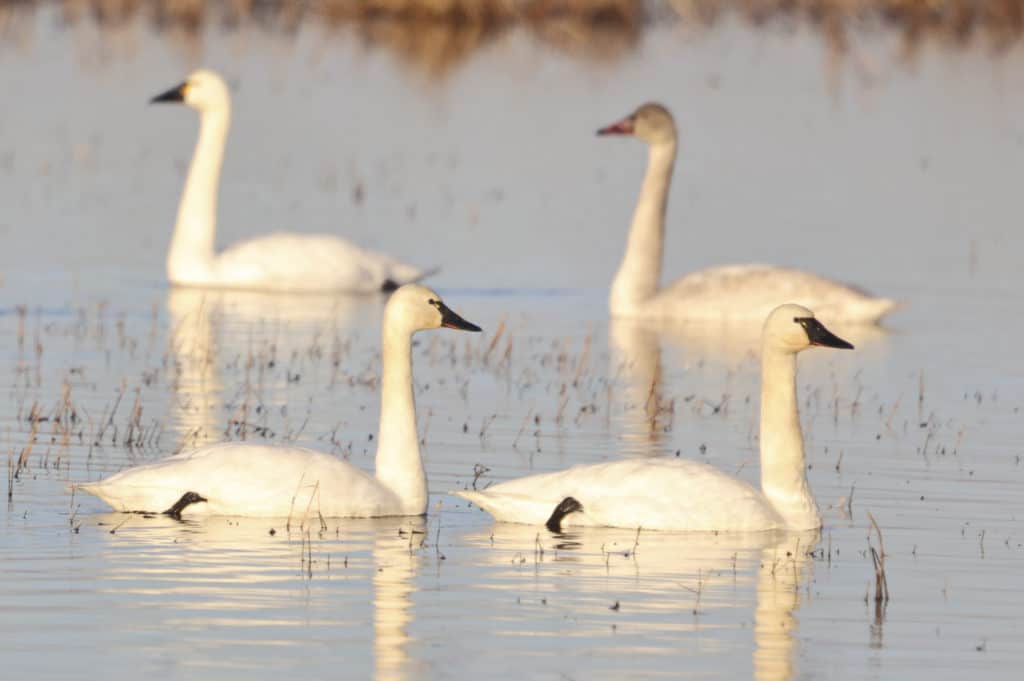Creature Feature

Several Swans A-Swimming
By Wayne Bierbaum
It’s the time of the year when tundra swans arrive in the Chesapeake Bay from the northern regions of Canada. The swans arrive primarily as family groups, two parents and up to two goslings. This month, more than 100 swans arrived at Blackwater National Wildlife Refuge.
The family groups band together in flocks and stay in areas with a good food supply and protected water. They spend their nights in the safety of water and during the day they feed on the grasses and plants in the surrounding fields or on clams buried in the mud. The birds are large, weighing up to 20 pounds. Unlike most ducks that can pop up into the air, the heavy swans need space to get a running start to fly, so they choose landing areas with enough takeoff room.
Because the tundra swans vocalize frequently, they are nicknamed “whistling swans”. After spending a night on the water, a group of swans will start to talk with each other, which sounds like they are deciding when they should fly, and at some point, they make a loud splashy takeoff, a few at a time, until the group is up. They then talk with each other in the air, like they are trying to decide where to go.
The size of the birds protects them against predation. They are too large for foxes or hawks. On the east coast, only bears, bobcats, and an occasional eagle will take down a swan. I imagine that a coyote or wolf could make a meal of them. Only one eastern state allows human predation. North Carolina has a regulated hunt with 5,000 permits issued a year.
The tundra swan is white and has a predominantly black bill with signs of yellow near its cheek. The bill at their cheek line is slightly curved and there is a slight curve to the bill as it comes off the forehead. The tundra swan’s larger and rarer cousin, the trumpeter swan, has straight bill lines at the cheek and off the forehead, and their bill has no yellow on it. The distinction is very slight, and since an occasional trumpeter swan will fly with tundras, it is good to understand the differences. The invasive mute swan has a mostly yellow bill.
I like trying to get photos of the swans flying in unison. The best place I have found to watch them take off, fly and land is at Blackwater NWS. But they are also frequently found at the mouth of the South River, the north shore of Sandy Point State Park, and along the shores of Herrington Bay.
At Blackwater, the birds feed on grasses, but at the other locations, they eat more submerged grasses and clams, and then they do a lot of tail-in-the-air feeding and less flying.
One of the remarkable things about the tundra swans is that, in the spring, they all seem to fly north at almost the same time. Quite often, they migrate at night, talking to each other as they fly high overhead.
